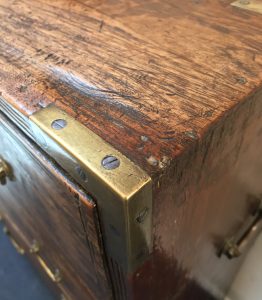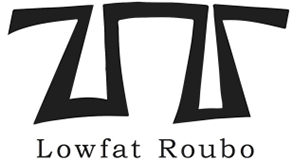
After a couple of glorious weeks away with friends and family spent below the radar this blog post is about piece of furniture I came across in a sale about a month ago. Listed in the catalogue as a Campaign Chest with a guide price of £1200-1500, it was attracting quite a bit of attention at the preview; lots of oohs and aahs and even the occasional pat on the top. With my cabinetmakers hat on it struck me as a little odd at the time especially for a piece that wasn’t exactly in the best of health. Don’t get me wrong; there’s nothing wrong with pieces that need a bit of work, especially if you’re a dealer with connections and the price is right. If the property dealers’ mantra is location, location, location the antique furniture dealers’ is proportion, proportion, proportion and this example had it in spades. And as if that weren’t enough it was also on the small side. You see, compact pieces like this are the antique furniture trade’s equivalent of a chihuahua. You can generally expect the quality of craftsmanship of campaign furniture to be above average in terms of construction, regardless of the choice of materials used. The market for these items in England was such that some suppliers even published catalogues with a three tier spec to cater for customers on a budget. Swapping deal (a catch-all term used for soft wood) for mahogany or teak for some components would constitute an upgrade in both spec and price, with teak being the most expensive. If the proportions weren’t unusual enough for this campaign chest then some of the construction details definitely were.
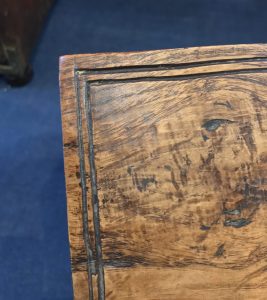
Take the scratched moulding on the drawer fronts for example; not that unusual I guess until you consider the execution. Given that every single component on this chest is teak and assuming it came from an English workshop, that’s not what you’d expect. My guess, and it can be no more than a hunch, is that it originated from overseas. Still not convinced? Well, have a look at the dovetails on the back of the drawer boxes; pins where you’d expect to see tails and that dear reader is just not cricket. At least not any game of cricket played on the village greens of England.
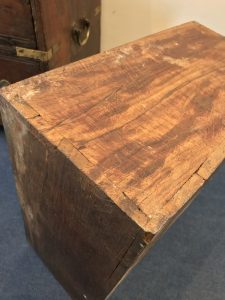
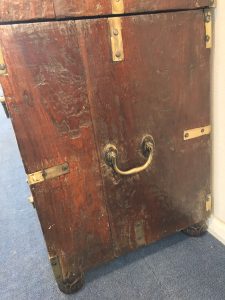
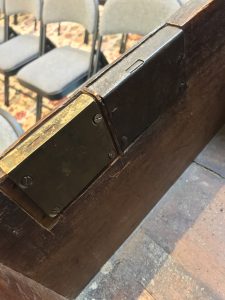
I found out later that the hammer came down on this lot at the higher end of its valuation, so with tax and commission it cost somebody around £2000 to take home.
